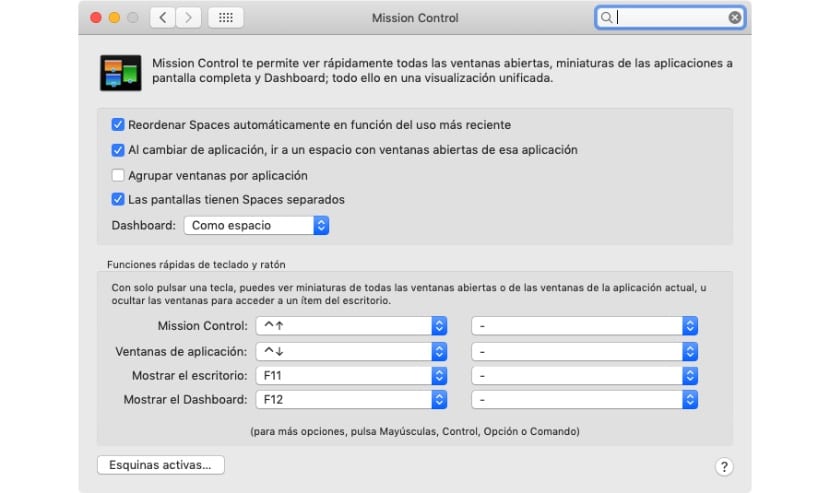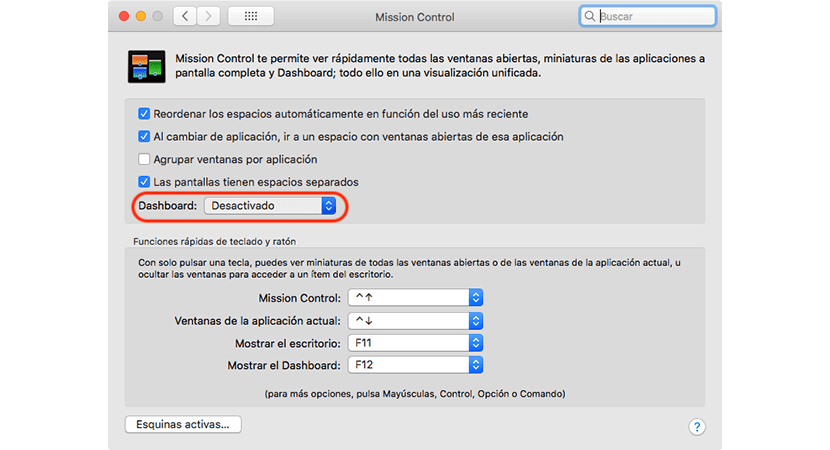
As the years have passed, the utility and Dashboard functionality has been reduced, reaching the point that Apple itself deactivates it natively with each new version of macOS. But, despite this, we can still find a large number of users who regularly use it.
Thanks to the Dashborad we can quickly access widgets with which we can interact quickly without having to go to the Launchad. Among the most popular widgets we find the calculator, stock information, time, time zones, search in the contact book ... If you think you can give it a try, then we show you how to activate the Dashboard in macOS Mojave.
Thanks to Mission Control, we can quickly see all open windows, full-screen application thumbnails and the Dashboard, all in a unified display. If we want activate the Dashboard, we must go to Mission Control, located within the System Preferences.

Next, we must place the mouse next to the drop-down that is titled Dashboard and select how we want to activate it: as a space or as an overlay. In order not to get involved with the operation of the Dashboard, we must select as space.
Once activated, once we activate Mission Control, we will check how in front of the first desk, we find a new panel called Dashboard. By hovering over it, we will have at our disposal a series of widgets on which we can interact quickly and easily.
How to deactivate the Dashboard

To deactivate the Dashboard, we must perform the same steps, but this time, we must select within the drop-down next to the title Dashboard Deactivated. At that time, the panel that was displayed right in front of the first desktop it will disappear completely.